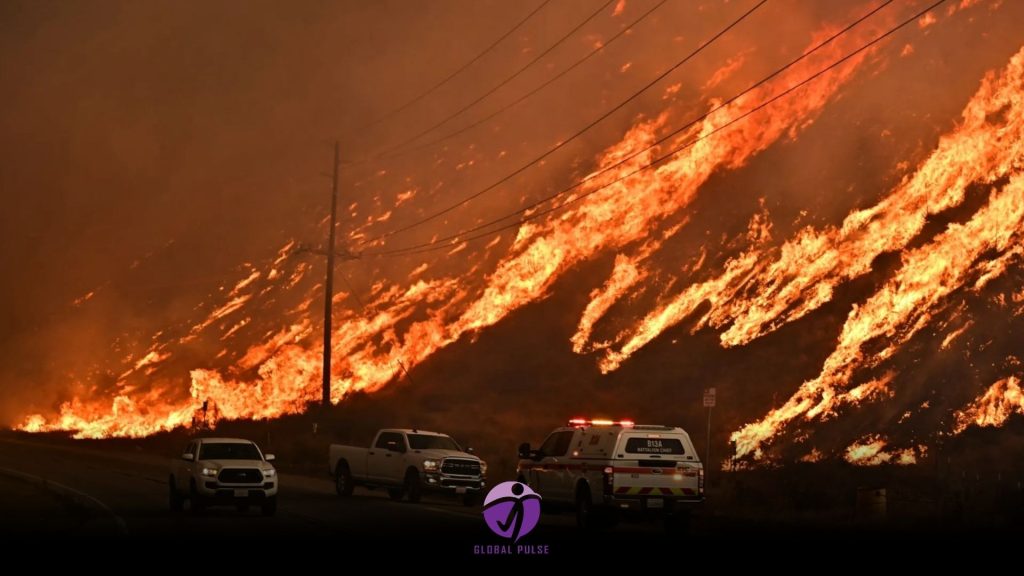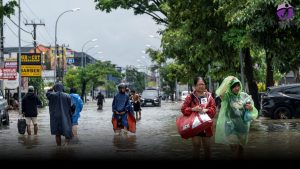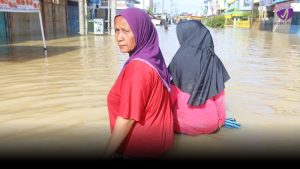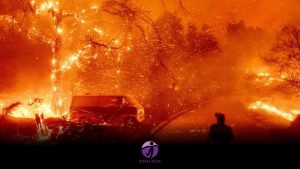A recent scientific study has confirmed that climate change played a significant role in the hot, dry weather conditions that contributed to the devastating fires in Los Angeles.
According to World Weather Attribution, an organization renowned for its research connecting extreme weather events to climate change, weather conditions became approximately 35% more likely.
The authors observed that the wildfire season in Los Angeles is extending, coinciding with a decrease in the rainfall that typically extinguishes these fires.
Scientists emphasize the complexity of wildfires, noting the interplay of various factors. However, they assert that a warming climate increases Los Angeles’s vulnerability to severe fire incidents.
Dr. Clair Barnes, the study’s lead author from Imperial College London, stated, “Climate change increased the risk of the devastating LA wildfires.”
“As drought conditions increasingly extend into the winter months, the risk of wildfires escalates, particularly during the powerful Santa Ana winds that can rapidly transform minor sparks into catastrophic blazes.”
The Santa Ana winds are characterized by their strong and gusty nature. They originate from inland California and sweep towards the coast in an east or north-easterly direction.
In early January, devastating fires claimed the lives of approximately 30 individuals and resulted in the destruction of over 10,000 homes as they rapidly spread across the affected areas.
A recent study examines the fire-prone conditions, which can potentially result in hazardous conflagrations.
A team of researchers from World Weather Attribution (WWA), a global organization known for its swift assessments of climate-related weather phenomena, has conducted the study.
Climate models simulate the impact of warming trends since the mid-19th century on the frequency and intensity of heat waves, droughts, floods, and fires.
The extensive combustion of coal, oil, and gas following the Industrial Revolution has released billions of tonnes of greenhouse gases into the atmosphere, significantly contributing to global warming.
These gases have functioned similarly to a blanket, increasing temperatures by approximately 1.2 degrees Celsius since that time.
The WWA group has used climate models, statistical methods, and real-world observations to demonstrate the significant impact of climate warming on extreme events.
The recent fires in Los Angeles have been attributed to hot, dry conditions, which experts predict will manifest approximately once every 17 years.
The likelihood has risen by approximately 35% when compared to a scenario in which the world had not undergone warming.
“The models demonstrate results that closely align with real-world observations,” stated Dr. Friederike Otto, head of World Weather Attribution.
“In this combined index, confidence in the results is high. There is a clear signal that can be quantitatively attributed.”
In addition, the researchers investigated other significant factors that may contribute to wildfires, such as the duration of the fire season.
Through an examination of weather observations, researchers discovered that this phenomenon has extended by approximately 23 days since the onset of global warming, which began around 1850.
The team indicates that this suggests a growing overlap between the dry conditions and the Santa Ana winds, both essential for the propagation of fires.
Recent analysis indicates that dry conditions in the Los Angeles area from October to December are approximately 2.4 times more probable than they were prior to humans’ widespread use of fossil fuels.
Researchers have indicated that climate change has heightened the likelihood of the hot, dry conditions that contributed to the emergence of the fires.
Nevertheless, the authors cautioned about the relationship between increasing temperatures and the extended fire season or reduced rainfall, noting that the models did not indicate a significant correlation.
Despite these concerns, the evidence suggests that a warmer planet heightens the likelihood of catastrophic wildfires. As the burning of fossil fuels persists, the risk of such events is expected to escalate.
“The research indicates that climate change has increased the likelihood of fires in Los Angeles, although there remains some statistical uncertainty,” stated Prof Gabi Hegerl from the University of Edinburgh, who was not involved in the study.
“In a statement, she emphasized the importance of the findings, describing them as a carefully researched result that warrants serious consideration.”
The latest study expands upon findings that emerged during the height of the ongoing fires.
A recent study has established a connection between wildfires and a phenomenon known as “climate whiplash.”
Research indicates that periods of significant rainfall are often succeeded by notably dry conditions, heightening the potential for fire outbreaks.
In Los Angeles, a sequence of two wet winters has been succeeded by an unusually dry autumn and winter this year. The preceding wet conditions facilitated the growth of grass and shrubs, ultimately fueling the fires that ignited amid the strong Santa Ana winds.












